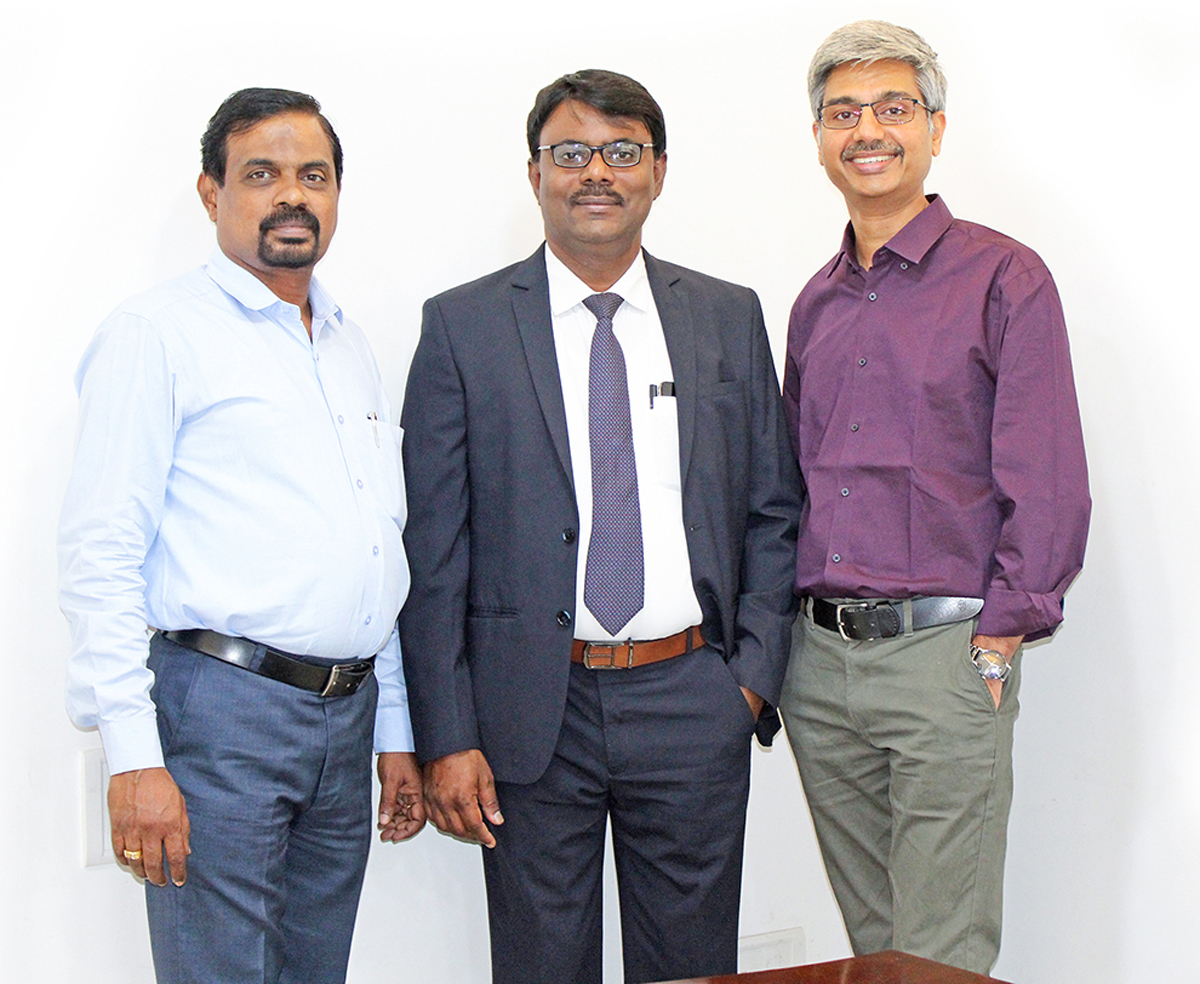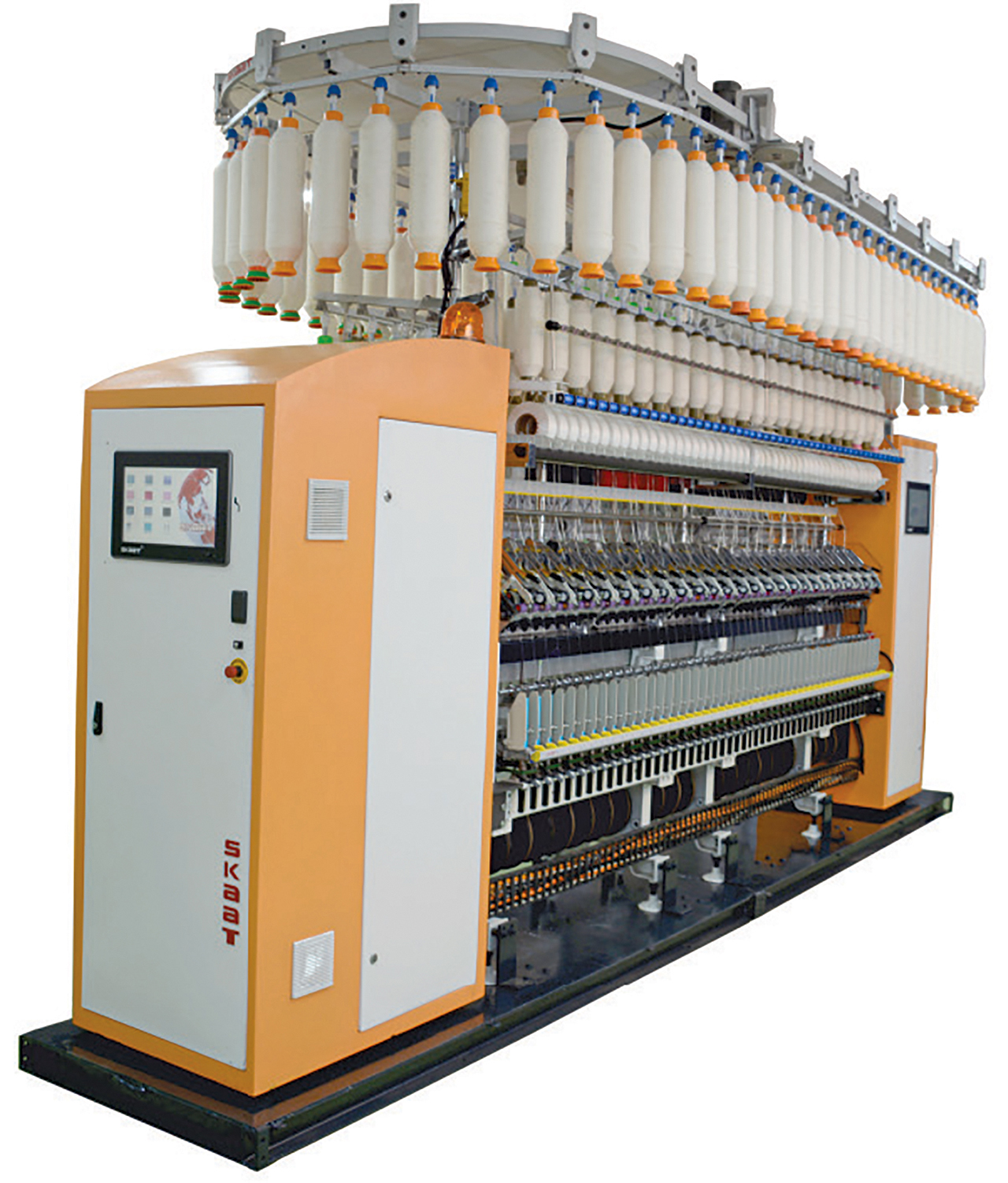Textile Magazine caught up with V Maheswaran, Managing Partner, K M Associates and R Jagadeesan, General Manager, SKAAT Group to know more about their collaborative approach and how this strategic alliance will create a host of benefits for spinners
Coimbatore-based SKAAT Group has always been known for its expertise in the field of fancy yarns. The group has also carved a niche for itself through its range of value-added products for ring frame process enhancement and automation segments in the spinning industry. It has now entered into a strategic alliance with K M Associates which has got wide-ranging experience in the textile industry, having worked closely with globally reputed European brand Amsler Tex AG. K M Associates is presently representing Rotorcraft AG, one of the top global Swiss brands for spinning solutions, in the Indian market.

SKAAT Group started off by manufacturing fancy yarn equipment, subsequently adding several products down the years, including functional yarns like core spun yarns with spandex filament, polyester filament, specialty-made Lycra T 400 filament for unique applications like elastic strips, fabrics and garments, high-strength yarns like poly core and poly core yarns for high-performance sewing threads and for shape retention fitness fancy denims and garments. According to V Maheswaran, Managing Partner, K M Associates, the alliance marks the coming together of two like-minded business entities with a common objective – the benefit of spinners.
“As you know we have been working with European companies for quite some time and our expertise is domain knowledge in spinning and allied technologies. As part of the alliance, we give the domain knowledge to the spinners, and we co-work along with the manufacturers to fulfil the unique requirement of the spinners. Typically what happens in the case of a commodity supply chain is that the focus is on cost innovation. Spinners have to reduce the cost of manufacturing and they do it through various means such as the reducing cost of raw material, improving operational efficiency, increasing production, etc. whereas in the case of the innovation supply chain, adaption to the market needs is the key,” he adds.
“The market keeps changing. Today’s fashion gets obsolete tomorrow. It’s all about how fast we are able to adapt. Therefore, one needs to understand the market and then innovate to adapt. What happens is that most of spinners do not concentrate on innovation as they are occupied in achieving business targets,” Maheshwaran points out. Further, R Jagadeesan, General Manager, SKAAT Group, cites the example of the specialty of their fancy yarn attachment incorporated in an existing ring frame. He highlights the fact that it is easily modifiable to respond to different requirements in tune with the changing market scenario.

Passion Matters
Ultimately it is all about passion for innovation. “For example, if a spinner is going in for a ring frame attachment with the capability of producing just a basic slub yarn, he should not feel frustrated about the restricted number of products he can make. If he opts for fancy effects, as demanded by the market, he can use the same ring frame for roving injection, SIRO, dual slub or mosaic effect,” Jagadeesan says. “To innovate, spinners need a different kind of mindset. Normally, around 80% of the production can be for the commodity market and the rest 20% can be innovation. This provides an ideal balance” he adds. According to both Maheswaran and Jagadeesan, they only want to work with those spinners who are genuinely passionate about the concept. “We will help the spinners differentiate from the crowd,” Jagadeesan states.
Positive Response
While it is still early days, the alliance has already started generating positive response in the market. Elaborating, Maheswaran informs, “We joined hands with SKAAT Group in the month of January 2021. A lot has been achieved in this short period and we have already started working with some spinners. Very soon we will complete the installation of our first machine.” Adds Jagadeesan: “We will continue to have our own separate supply chain for selling our other products. The alliance will lead to a win-win situation for all those involved.”
K M Associates with its office in New Delhi has on board 10 professionals and works on a project to project basis with separate teams under each manager. “This is done to ensure specialisation. One of our major specializations is core spun yarn. Then we have slub, injection and compact yarns. We also do customised yarns. For example, we are doing something for a spinner in Japan. They want an exclusive product. So, therefore, we won’t be selling this product outside. We have signed an agreement to that effect,” he adds.
—
Throwing more light on this collaboration, he says, “In simple terms, SKAAT Group and K M Associates will use their expertise to create a ‘platinum’ segment for spinners who would like to differentiate and enter into the premium value-added segment. We believe there are three reasons why alliances are a must-do investment for any spinners competing in the marketplace:
1. Product lifecycles are becoming shorter and shorter. This requires spinners to adapt quickly to market dynamics. Few spinners have the necessary ability and capital in all the segments of their value chain to achieve these objectives by operating solo.
2. Both businesses and consumers expect and demand more integrated solutions to solve their needs, pushing companies to work together to create differentiated offerings. No company has enough expertise or capital to go it alone.
3. On the basis of their demand patterns, products for spinners fall into one of two categories: they are either primarily functional (commodity yarns) or primarily innovative (specialty yarns). The root cause of the problems in many supply chains is the mismatch between the type of product and the type of supply chain.”